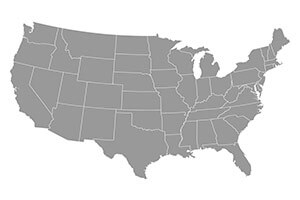
UNITED STATES
Almond pollination in California this year may very well turn into a mud derby for beekeepers. Some of our reporters indicated very wet conditions in the almond groves, which is something beekeepers will have to readjust to after several years of having passable roads into the groves. Some reporters were also worried about obtaining enough good bee foraging days if rainy conditions continued during almond bloom. On the bright side, the rains and snows will help California agriculture immensely after suffering under unrelenting drought for several years. In particular, beekeepers are hoping that plant life will rebound and allow for more normal honey flows after several years of disappointing honey crops in this once top honey-producing state.
Reports of large colony losses in some commercial bee operations have beekeepers worried about a return to catastrophic bee losses, but it was too early to know about how bad bee losses will eventually be this year.
In the northern half of the country winter weather kept colonies inactive. The Northeast and Mideast suffered the worst after enduring a huge snow storm in January. Meanwhile, the southern states have at times been overwhelmed by too much rain and resulting flooding in low-lying areas. Trees and wildflowers have been blooming, but at times the stormy weather has prevented colonies from foraging. In some states beekeepers were still feeding colonies until better foraging weather returned. The orange flow in Florida may very well be down again this year since both trees and bees are in poor condition.
Package bee and queen companies were very busy preparing for another hectic spring season. Bee and queen orders have been heavy and some companies stopped taking orders early in January for spring deliveries.
Although a number of beekeepers had little trouble selling their honey in 2015, some of the larger producers continue to worry about less demand and lower prices for large lots of bulk honey. Increasing competition from imported honey is blamed for the downturn. Small-lot sales, as well as the retail market, continue to be strong.
NORTHEAST
After a mild December, winter came roaring back in January with very cold temperatures and a blizzard for the record books. Some locations took several days to dig out and in many cases beekeepers had to go hunting for their beeyards buried under snowdrifts. In most situations, complete snow cover is not a problem since it allows for air to continue to reach clusters. Ice, however, is a different story and in some cases colonies have suffocated due to ice cover. Beekeepers were hoping for a return to milder weather in February to allow for early colony inspections and feeding where needed. Many beekeepers ordered their packages, nucs and queens early for fear of not being able to lock in early spring delivery dates. Unsold beekeeper honey supplies are about gone. New beekeeper classes are shaping up to be very popular again this year.
MIDEAST
Similar to the Northeast, these states also had a rude awakening to winter in January after a very mild December. Blizzard conditions and then deep snows closed businesses and schools for days as road crews plowed roads. Beekeepers were alarmed by the change of weather, but most of the veteran beekeepers realized that it wouldn’t cause a problem for colonies as long as they had adequate provisions. Beekeepers were being advised to begin checking colonies for stores in February and to feed as weather permitted. Maple pollen should be starting this month and will be quickly followed by spring flowers and fruit bloom. Interest among new beekeepers continues to be quite good if short course attendance is any indication. Many beekeepers had already ordered their package bees, nucs or queens. Some bee companies sold out early and had stopped taking orders for spring delivery. Most beekeepers told us that they were sold out of honey produced in 2015.
SOUTHEAST
Much of the area had a rainy fall and early winter, often accompanied by stormy weather. Temperatures were generally mild, although short periods of cold weather at times extended down into this area. Reporters gave mixed news on colony conditions. While some said that the warmer weather had caused bees to eat all their stores early, others felt that the mild winter had allowed their colonies to survive the winter with more healthy bees. Maple and other early pollen and nectar sources began blooming in December and have continued as the weather has allowed.
In Florida, the ti ti flows looked good, but orange honey flows may be off again due to continued pest and spraying problems in the groves. Beekeepers have been feeding colonies in many Southeastern states to hold them over until more flowers begin blooming. Package bee and queen companies were working hard to prepare for what looks like it will be another very busy season. Some bee companies booked up early and had stopped taking spring orders before the end of January. Demand for honey remains good at both the wholesale and retail levels, but supplies will continue to be short until new crop honey starts being extracted.
SOUTHWEST
Beekeepers had begun checking and feeding colonies as weather permitted. This area did have more cold weather than the Southeast, but conditions were generally mild over winter with short periods of cold and sometimes snowy weather. Ground moisture is generally described as fair to good. Colonies are starting to rear more brood and beekeepers are combining weak colonies and preparing equipment for making divides this spring. Many commercial beekeepers still had their colonies in California for almond pollination, but would be moving them again shortly. Demand for both bees and honey remains excellent, so a number of beekeepers …


